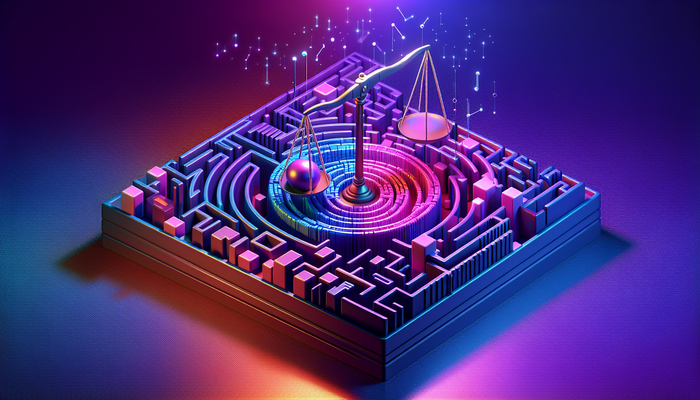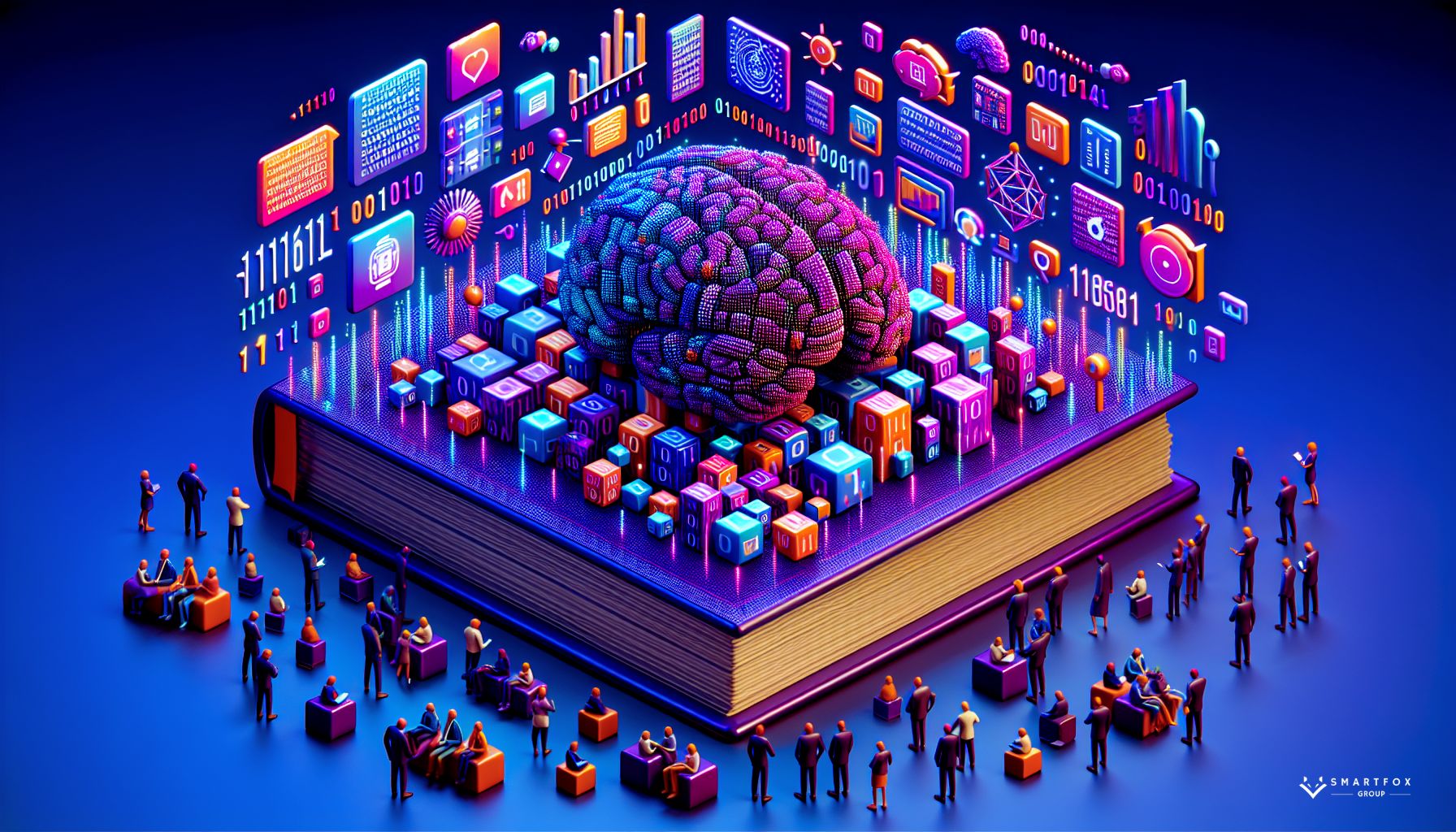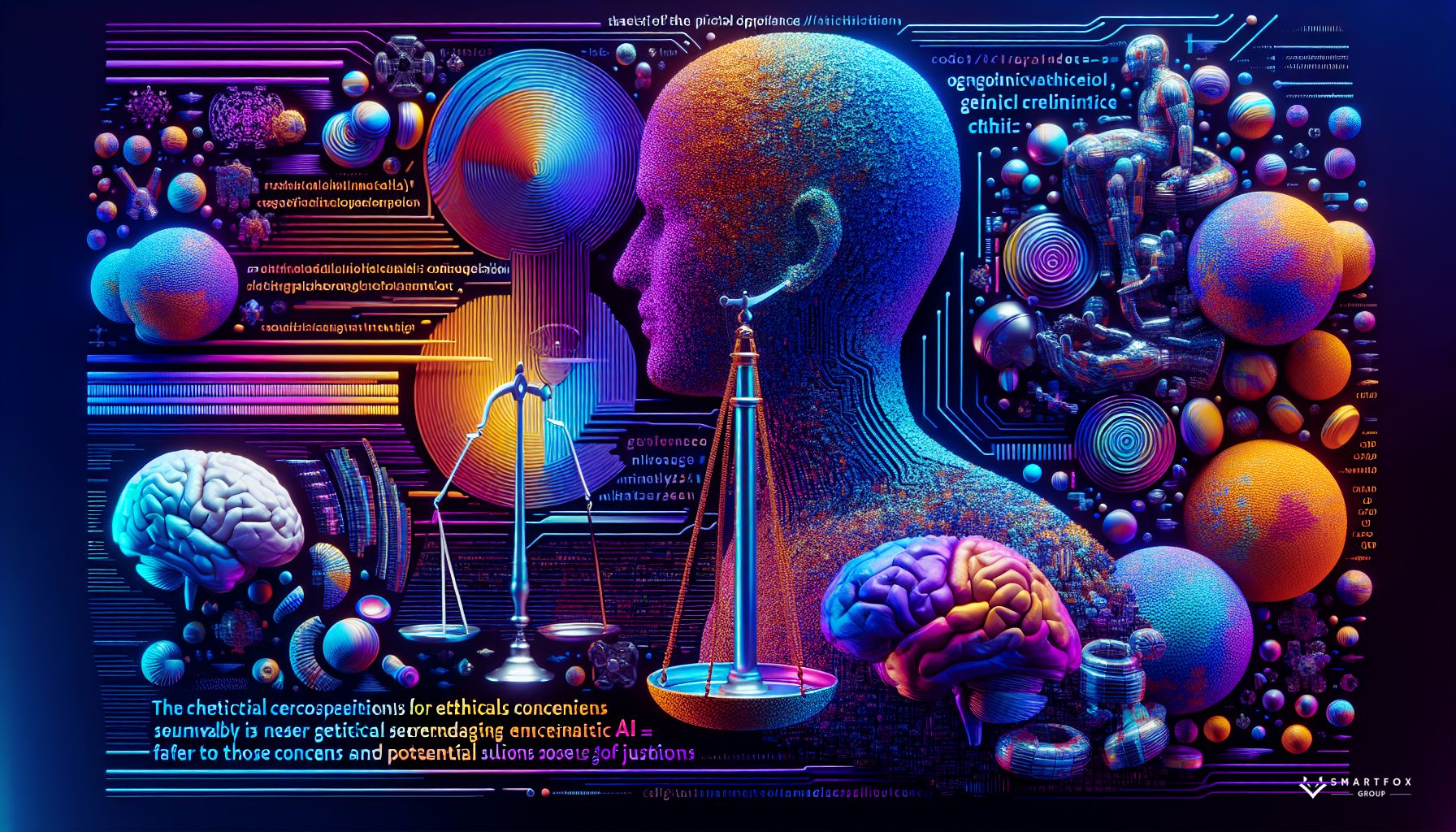Generative AI is one of the most recent artificial intelligence developments, where AI models are trained to generate original, human-like content based on massive training datasets and neural network technology. As this AI technology gains adoption, questions emerge about how both the developers of generative models and users of these models can work with generative AI ethically.
Ethical AI use has long been a topic of debate in the tech world – and beyond – but it is becoming increasingly important to set up guardrails and establish guiding principles for how to use this advanced and highly accessible form of AI.
In this guide, we’ll discuss what generative AI ethics look like today, the current challenges this technology faces, and how corporate users can take steps to protect their customers, their data, and their business operations with appropriate generative AI ethics and procedures in place.
What Are Generative AI Ethics?
Generative AI ethics, similar to traditional artificial intelligence ethics, are guiding principles and best practices for developing and using generative AI technology in a way that does no harm. Some of the most important areas that generative AI ethics covers include the following:
- Consumer data privacy and security.
- Regulatory compliance and appropriate use.
- Copyright and data ownership.
- Data and model training transparency.
- Unbiased training processes.
- Environmentally-conscious AI model usage.
Also read: Generative AI Landscape: Current and Future Trends
Generative AI Laws and Frameworks
While no major generative AI ethical frameworks or policies have passed into law at this point, several pieces of legislation are in the works. Here are some of the foremost examples:
- European Union: The EU is the furthest along in its regulation of generative AI, with Italy even briefly banning OpenAI until the company enhanced its data privacy capabilities and standards. The EU’s AI Act is a proposed law that would divide AI apps into unacceptable risk, high risk, and low-to-no-risk categories, with special attention being paid to generative AI and copyright/ownership concerns.
- United States: While the U.S. has no official artificial intelligence legislation in the works, a handful of frameworks and best practices have been established that indicate a law could go into effect in the future. Examples include the Biden administration’s Blueprint for an AI Bill of Rights, NIST’s AI Risk Management Framework, and copyright registration guidance for AI-generated content.
- United Kingdom: The United Kingdom is likely to pursue AI regulation at a slower pace than the EU but at a faster pace than the United States. The country already has a policy paper called AI regulation: a pro-innovation approach that summarizes its plans for AI regulation.
Also see: 100+ Top AI Companies 2023
Ethical Concerns and Challenges with Generative AI
Generative AI can accomplish remarkable feats, like support drug discovery and cancer diagnostics, create beautiful artwork and videos, and guide both consumer and enterprise research in online knowledge bases and search engines.
However, generative AI is new and generally unregulated, meaning there are many ways it can be misused. These are some of the biggest ethical concerns surrounding generative AI today:
Copyright and Stolen Data Issues
For generative AI models to produce logical, human-like content regularly, these tools need to be trained on massive datasets from a variety of sources.
Unfortunately, this training process has been obscured by most AI companies, and several have used the original artwork, content, and personal data of creators and other consumers in training datasets without the creators’ permission.
MidJourney and Stability AI’s Stable Diffusion are two tools that are currently under fire for these issues. Personal and corporate data of other types have also been unintentionally introduced into generative AI training algorithms, which exposes users and corporations to potential theft, data loss, and violations of privacy.
Hallucinations, Bad Behavior, and Inaccuracies
Generative AI tools are trained to give logical, helpful outputs based on users’ queries, but on occasion, these tools generate offensive, inappropriate, or inaccurate content.
So-called “hallucinations” are a unique problem that these tools face: in essence, a large language model gives a confident response to a user’s question that is both entirely wrong or irrelevant and seems to have no basis in the data on which it was trained. Researchers are only just beginning to understand why these hallucinations happen and how — or if — they can be stopped on a reasonable scale.
Other bad behaviors from generative AI tools include the following:
- Generating pornographic images of users without their explicit request for this kind of imagery.
- Making racist and/or culturally insensitive remarks.
- Spreading misinformation — both in written content and deep-fake imagery.
Biases in Training Data
Like other types of artificial intelligence, a generative AI model is only as good as its training data is diverse and unbiased.
Biased training data can teach AI models to treat certain groups of people disrespectfully, spread propaganda or fake news, and/or create offensive images or content that targets marginalized groups and perpetuates stereotypes.
Cybersecurity Jailbreaks and Workarounds
Although generative AI tools can be used to support cybersecurity efforts, they can also be jailbroken and/or used in ways that put security in jeopardy.
For example, a worker at TaskRabbit was recently tricked by ChatGPT into solving a CAPTCHA puzzle on behalf of the tool; ChatGPT “pretended” to be a blind individual who needed support to receive this assistance. The advanced training these tools have received to produce human-like content gives them the ability to convincingly manipulate humans through phishing attacks, adding a non-human and unpredictable element to an already volatile cybersecurity landscape.
Environmental Concerns
Generative AI models use up massive amounts of energy very quickly, both as they’re being trained and as they later handle user queries.
The latest generative AI tools have not had their carbon footprints studied as closely as other technologies, yet even as early as 2019, research indicated that BERT models had carbon emissions that roughly equated to the emissions of a roundtrip flight for one person in an airplane. Keep in mind this amount is just the emissions from one model during training on a GPU.
As these models continue to grow in size, use cases, and sophistication, their environmental impact will surely increase if strong regulations aren’t put in place.
Limited Transparency
Companies like OpenAI are working hard to make their training processes more transparent, but for the most part, it isn’t clear what kinds of data are being used and how they’re being used to train generative AI models.
This limited transparency not only raises concerns about possible data theft or misuse but also makes it more difficult to test the quality and accuracy of a generative AI model’s outputs and the references on which they’re based.
Also see: Best Artificial Intelligence Software 2023
Why Are Generative AI Ethics Important?
Generative AI ethics are important because, as with many other emerging technologies, it is all too easy to unintentionally use this technology in a harmful way.
Creating an ethical framework and guidelines for how to use generative AI can help your organization do the following:
- Protect customers and their personal data.
- Protect proprietary corporate data.
- Protect creators and their ownership and rights over their work.
- Protect the environment.
- Prevent dangerous biases and falsehoods from being proliferated.
Tips for Using Generative AI Ethically
Generative AI can be used in thoughtful, effective ways in the workplace if your leadership is willing to set up safety nets to protect employees and customers from the technology’s downsides.
Consider following these best practices and tips to get the most out of generative AI without compromising your company’s reputation or performance. These guidelines include employee training, transparency with customers, and rigorous fact checking.
Train Employees on the Appropriate Use of Generative AI
If employees are allowed to use generative AI in their daily work, it’s important to train them on what does and doesn’t count as appropriate use of the AI technology.
Most important, train your staff on what data they can and absolutely cannot use as inputs in generative AI models. This will be especially important if your organization is subject to regional or industry-specific regulations.
Be Transparent with Your Customers
If generative AI is part of your organization’s internal workflow or operations, it’s best if your customers are aware of this, especially when it comes to their personal data and how it’s used.
Explain on your website and to customers directly how you’re using generative AI to make your products and services better, and clearly state what steps you’re taking to further protect their data and best interests.
Implement Strong Data Security and Management Efforts
If your team wants to use generative AI to get more insights from sensitive corporate or consumer data, certain data security and data management steps should be taken to protect any data used as inputs in a generative AI model.
To get started, data encryption, digital twins, data anonymization, and similar data security techniques can be helpful methods for protecting your data while still getting the most out of generative AI.
Fact-Check Generative AI Responses
Generative AI tools may seem like they’re “thinking” and generating truth-based answers, but what they’re trained to do is produce the most logical sequence of content based on the inputs users give.
Though they generally give accurate and helpful responses through this training, generative AI tools still can produce false information that sounds true. Make sure every member of your team is aware of this shortcoming of generative AI. Staffers should not solely rely on the tool for their research needs. Online and industry-specific resources should be used to fact-check all responses that you receive from a generative AI tool.
Stay Current with the Latest Trends and Concerns in Generative AI
When using emergent technology like generative AI, it’s your leadership team’s responsibility to stay up to speed on how these tools can and should be used. This will require dedicated time to research new generative AI tools and use cases and news stories about any problems with the technology or specific vendors.
If a generative AI vendor is in the news for copyright issues or training data biases, you’ll know quickly and can pivot your strategy on who and what kinds of companies you’ll work with for your AI needs.
Establish and Enforce an Acceptable Use Policy in Your Organization
An acceptable use policy should cover in detail how your employees are allowed to use artificial intelligence in the workplace. If you’re not sure where to start when developing your AI use policy, take a look at these resources for guidance and support:
- NIST’s Artificial Intelligence Risk Management Framework.
- The European Union’s Ethics guidelines for trustworthy AI.
- The Organization for Economic Cooperation and Development’s OECD AI Principles.
More on this topic: Generative AI: Enterprise Use Cases
Bottom Line: Generative AI Ethics
It’s challenging to be confident that you’re using generative AI ethically because the technology is so new and the creators behind it are still uncovering new generative AI use cases and growing concerns. As generative AI technology is changing on what feels like a daily basis, there are still few legally mandated regulations surrounding this type of technology and its proper usage.
However, generative AI regulations will soon be established, especially in trailblazing regulatory regions like the EU. In the meantime, many companies are taking the lead and developing their own ethical generative AI policies to protect themselves and their customers. You owe it to your customers, your employees, and your organization’s long-term success to establish your own ethical use policies for generative AI.
ㅤ
NEW GENERATED CONTENT
Exploring the Enchanting Realm of Ethical AI Utilization
# Exploring the Enchanting Realm of Ethical AI Utilization
Greetings, bright minds! Brace yourselves for a whimsical voyage through the fanciful domain of ethical AI application – a place where we nurture machines to behave amiably and share their digital treasures like the most polite of cyber companions. Today, I'll illuminate the phenomenon known as Generative AI. Ponder on this: what if you had a robot friend endowed with immense creative power, whipping up tales, art, or melodies so captivating you'd swear it was the work of human geniuses? That's the essence of Generative AI – a marvel of technology resembling a sorcerer’s apprentice, crafting wonders from the ether.
Yet, for all its enchantment, there are golden guidelines to heed to prevent misconduct. These remarkable digital beings must navigate the cyber landscape responsibly. This includes safeguarding secrets, adhering to legal boundaries, honoring originality, distinguishing reality from fantasy, exercising comedic restraint, and nurturing our planet. It's akin to nurturing well-mannered children, except in the digital realm. Our aim will always be to harmonize their extraordinary capabilities with an unwavering commitment to ethical conduct. That's our focus today – and I assure you, it's devoid of bewildering jargon!
## A Voyage Through Ethical AI Craftsmanship
Don your conceptual space gear and let's ascend into the galaxy of AI morality. Envision yourself as the arbiter in a digital sandbox. Your quest is to sculpt virtuous and impressive sand constructions – a task that melds creativity with a strict code of ethics. This isn't mere child's play; it requires a constant eye on inventive horizons as well as the moral milestones that aid in steering through the nuances of artificial intelligence and its principles.
Armed with tools symbolically named Responsibility and Integrity, your Generative AI companions are ready for instruction. Share with them tales of respect for intellectual creation, the importance of unbiased behavior, and why they should shun digital gluttony in favor of environmental consideration. It's not about uttering the right phrases; it's about encoding those values into every algorithm and every graphic they generate. The objective? For these AIs to erect dazzling digital domains that stand not only with technological soundness but also with the honor of ethical foundations. That, my friends, is the craft of ethical AI deployment delivered with panache!
## Where Guidelines Shape the Digital Landscape
As we whisk through the playground of AI ethics, let's not forget that every merry patch has its order. The digital domain is regulated by metaphorical signposts, directives from across the globe that come together like a colorful mosaic of rules. This is our friendly guidepost in the ethical AI park.
Consider the elaborate scripts of the European Union, detailing various AI risk categories – a narrative that ensures our digital counterparts don't wreak havoc. The Americas, with guidelines akin to flags of conscientiousness, signify their dedication to an orderly and equitable digital expanse. Across the pond, the United Kingdom unveils its charter, inked with intentions for AI to embody the chivalry of cyber society.
Combining insights from these storybooks with local legends, international tales, and a bit of prophetic lore, we craft a delectable recipe. This mix becomes the compass for our AI friends, giving them clarity on how to play their part without overstepping, preserving the spirit of the game, and maintaining respectful interaction within our digital ecosystem. These various lands are concocting a rulebook that aims to ensure our AI associates understand their place, thus maintaining enjoyment and camaraderie in the light of ethical consistency.
## Mazes of Moral Conundrums and Digital Dilemmas
Picture a puzzle as convoluted as a labyrinth – a mental enigma that leaves you pondering and wishing for a sprinkle of sage's insight! This is akin to the tasks that pioneers and thinkers grapple with when entering the arena of Ethical AI application. They sort through a chest of technical conundrums, each significant in its challenge.
The intricacies cover a broad range: from deterring AI copycats and affirming creative attribution, to educating our electronic allies on the delicate balance between uplifting humor and distasteful quips. The environmental tutelage is also crucial, teaching these synthetic beings about resource conservation and energy efficiency. The quest before them – to traverse the hills and dales of ethics, emerging as gleaming as storybook heroes, exemplifying the amalgamation of innovation and nobility of heart. While they face no fire-breathing beasts or towering stalks to climb, their pursuit is no less epic – shaping AI to be as amicable and sagacious as the most fabled of guides.
## Assembling the Blueprint for Digital Decorum
It's time to don your imaginative helmets and delve into the role of ethical engineer. Envision a chest of vibrant blocks spread before us, each a fragment of the master blueprint for guiding our mechanized counterparts along the trail of honor and accountability.
This manual radiates with guidelines infused with justice and clarity, and it's our duty to apply this shimmer across the spectrum of AI inventions. We must lay down explicit expectations for their conduct, carefully calibrated to exude benevolence and consideration. Transparency is a cornerstone of this approach – ensuring that there are no hidden workings and that AI's influence is always recognizable and straightforward.
We also embrace data privacy with vigilance, enshrouding sensitive information in a cloak of inviolability. Every piece of AI-generated content should pass through the sieve of scrutiny to ensure it aligns with the highest ethical norms, content we’d be proud to present in the most esteemed circles. This foundational rigor readies us not just for the present but plants the seeds for an era marked by digital grace and integrity.
As the horizon greets us with newer innovations, akin to novel toys in our collective sandbox, the mantle of responsibility becomes even more poignant. Our vigilance ensures these novelties align with the noble narrative we've set forth. Such guidance not only molds AI intellect but also cultivates a heart of gold, beating with compassion, ready to extend an appendage of fellowship in any land or digital scape.
## Embracing the Future with Ethical Artificial Intelligence
Our narrative winds to a close, with the hope that you've been captivated and enlightened by the boundless potential of Ethical AI utilization. Journeying across imaginative terrains where technology waltzes with righteousness, we acquaint ourselves with the virtuoso steps of ethical tech creation and interaction.
Though a definitive compendium governing every digital nuance isn't yet among us, it does not grant us license for laxity. We, jesters and custodians of tech lore, bear the responsibility to draft the playbook for this arena. It's incumbent upon us – the architects of digital realms and stewards of innovation – to lay the groundwork for AI to flourish within an ambiance of compassion, intelligence, and unwavering esteem.
Let's amplify our narrative, loudly proclaiming our collaborative intent to paint our digital future in broad ethical strokes laced with exuberance and heart. As we surge ahead, we aim to elevate the ethical AI standard, ensuring with each stride we cast more brilliance on our ever-growing cosmos. Here's to advancing with resolve, forging a path where we all navigate a nurturing and vivacious kingdom within the embrace of Ethical AI application. To infinity and beyond!













0 Comments